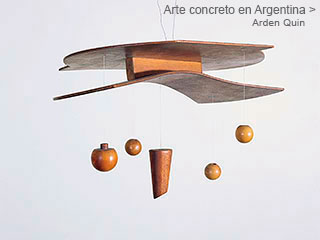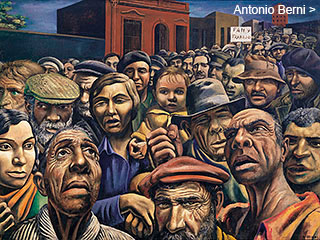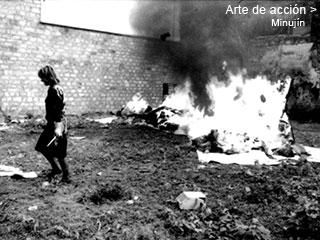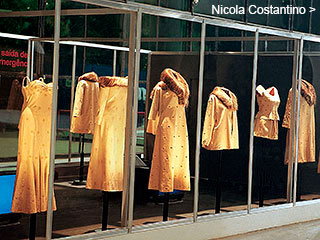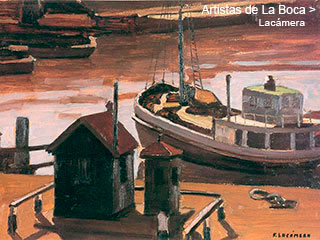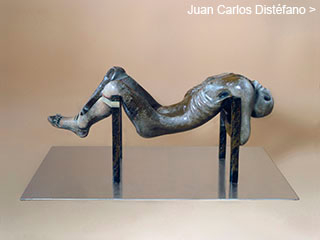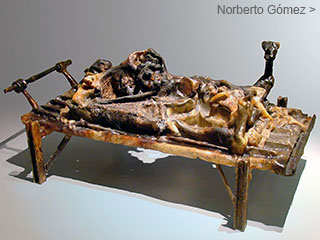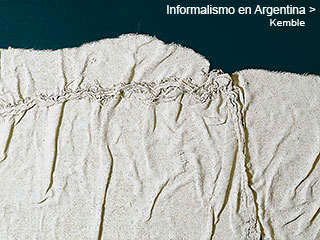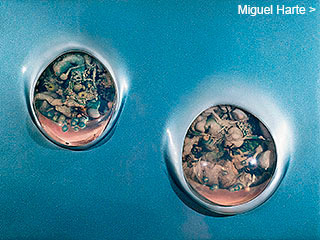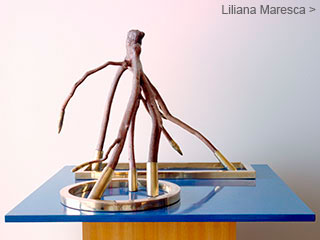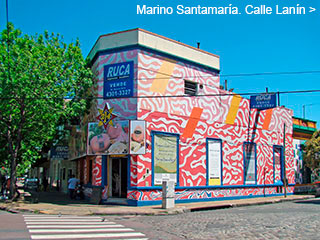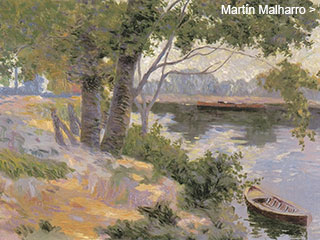Menú
Algunos dossiers
Juan Carlos
Distéfano
Distéfano
by
Adriana Lauria and Enrique Llambías
January 2003
January 2003
The dossier on Juan Carlos Distéfano spans from the time of his beginnings
as a painter to his recent works as a sculptor, a first for the CVAA. It covers
over forty years of his work and his commitment to art and reality. A special section offers a view on his work as a graphic designer, which he carried out mostly at the Di Tella Institute.
as a painter to his recent works as a sculptor, a first for the CVAA. It covers
over forty years of his work and his commitment to art and reality. A special section offers a view on his work as a graphic designer, which he carried out mostly at the Di Tella Institute.
1947
On his parents’ advice he enrols in the Escuela Industrial de Artes Gráficas N° 9 (National school of graphic arts number 9) in the neighbourhood of Barracas, Buenos Aires. In it he learns a craft that is related to his artistic leanings and his passion for drawing. He attends several workshops: book-binding, typography, typesetting, printing. His teachers are, among others, Luis Barragán, José Manuel Moraña, Vicente Forte, Leonardo Bardolla, Mateo Juan Saracino. Distéfano would later recall:
“Barragán was a magnificent painter and teacher. When I met him I was greatly dazzled for the second time in my life. Like Moraña and Forte, he was a first-class artist, but the most important thing in his classes was the human element. Not that I look down on technique, or that I consider what he taught me in that area of little value […] [but] to me he was, first and foremost, an example of how to live. [...] I enjoyed being in the workshop with him as a teacher four hours a day, he was near a long time, and I was able to observe him carefully, see how he moved, how he dressed, how he held his pencil, how passionate he was about certain things and how furious he got when we screwed up. And, above all, I could see his moral fibre. He was a decisive role model for me: a decent man, who lived for his art.” 
He reads James Frazer’s The Golden Bough. Magic and Religion, and studies archaisms, myths and symbols, as well as early Western art and pre-Columbian art.


